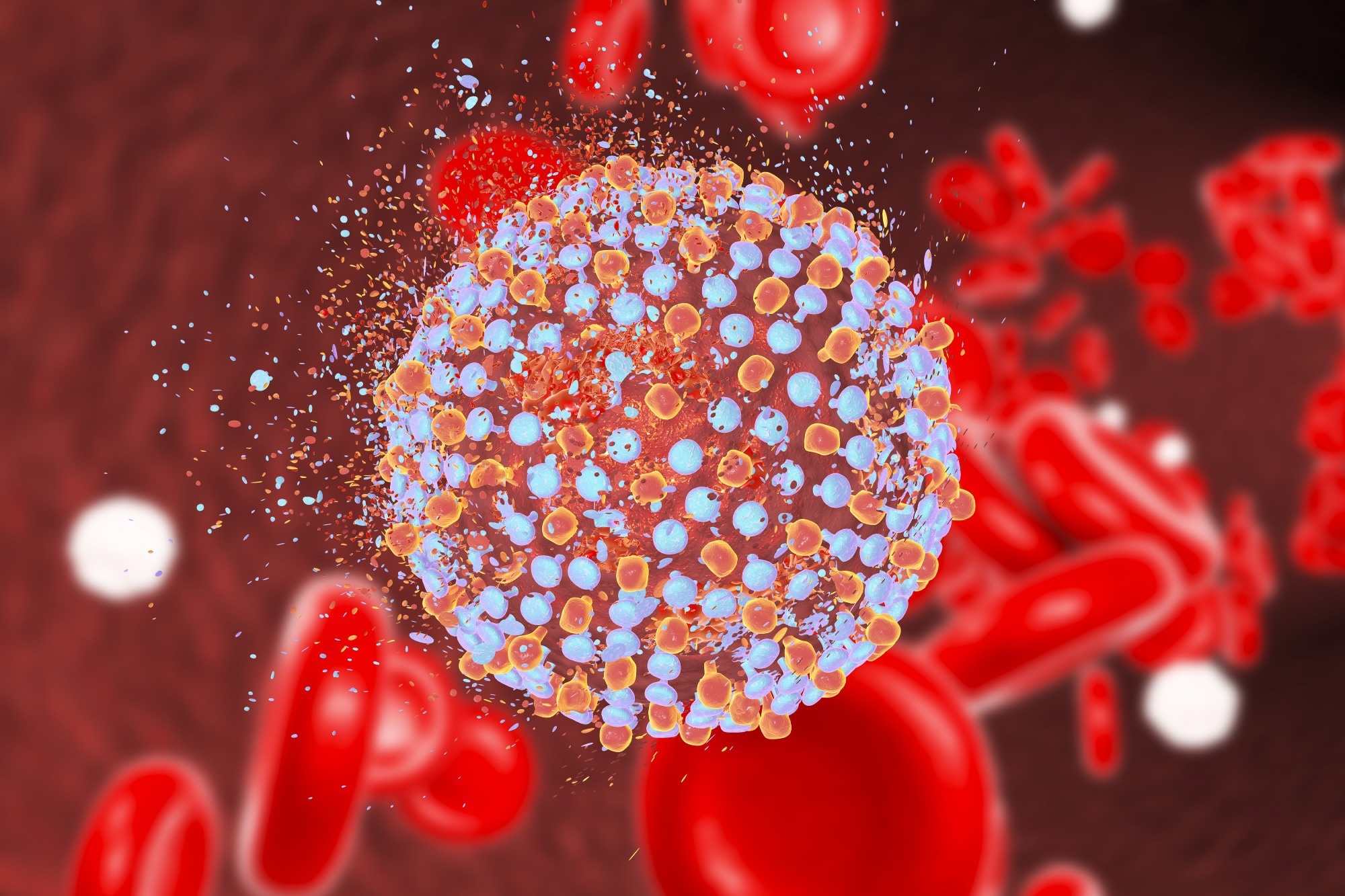In the recent Centres for Disease Control and Prevention (CDC) Morbidity and Mortality Weekly Report (MMWR), researchers described the hepatitis C virus (HCV) elimination cascade during the direct-acting antivirals (DAA) era between January 1 2013 and December 31 2022.
 Study: Hepatitis C Virus Clearance Cascade — United States, 2013–2022. Image Credit: KaterynaKon/Shutterstock.com
Study: Hepatitis C Virus Clearance Cascade — United States, 2013–2022. Image Credit: KaterynaKon/Shutterstock.com
Background
Hepatitis C is a serious health concern in the United States, causing advanced liver disease, cancer, and death. A brief course of orally administered and well-tolerated directly acting antivirals is advised for HCV-infected individuals to combat this.
A nationwide program to eradicate HCV was put forth with the Viral Hepatitis Nationwide Strategic Plan calling for 80.0% of individuals to eliminate HCV by 2030.
Establishing a comprehensive nationwide HCV infection cascade is difficult due to the scarcity of one data source that could describe all the steps.
About the report
In the present report, researchers presented the CDC's simplified, laboratory-based hepatitis C elimination cascade with data from nearly two million individuals with a history of HCV infection in the period of directly acting antiviral dominance.
De-identified and de-duplicated 2013-2022 nationwide hepatitis C virus testing data from individuals living in the US (including Washington) were analyzed. Tests included anti-HCV antibodies, qualitative or quantitative HCV ribonucleic acid (RNA) detection, and HCV genotyping.
The cascade categorized individuals based on five steps:
- ever infected, based on an HV-positive report (i.e., anti-HCV antibodies, HCV genotype or HCV RNA in detectable levels) between January 1 2013 and December 31 2021 (the index study period);
- viral testing, based on at least one HCV RNA tests performed between January 1 2013 and December 31 2022 (the period of follow-up);
- initial infection, based on detectable hepatitis C virus RNA levels at follow-up;
- cleared or cured, based on subsequent unascertainable hepatitis C virus RNA levels following the initial infection; and
- persistent HCV infections or reinfections, based on subsequent discernible hepatitis C virus RNA among cured individuals at follow-up.
Individual frequencies were computed at every cascading step. Following the techniques outlined in the CDC guidelines, conditional percentages for every stage were determined by dividing the count of individuals found to match the criteria to qualify in a specific phase by the count of individuals who satisfied the previous phase criteria.
Participants in all stages of the hepatitis C virus elimination cascade were examined by age, payer type, and sex. The age ranges were 0 to 19.0 years, 20.0 to 39.0 years, 40.0 to 59.0 years, and 60.0 years. The payer types were Medicaid, Medicare, private, other (self-pay or client), and unidentified (no payer type indicated).
Results
Between January 1, 2013, and December 31, 2021, 1,719,493 individuals were recognized as having previously been HCV-infected.
For the next phase, 88% of the previously-infected individuals had undergone HCV testing; 69% of individuals with HCV test reports had been initially infected; 34% of the initially infected individuals had been cleared or cured; and 7.0% (n=23,518) of the cured individuals had reinfections.
Among individuals who had previously been infected, 29.0%, 43.0%, and 27.0% were aged 20.0 to 39.0 years, 40.0 to 59.0 years, and 60.0 years, respectively; most (60.0%) were males.
Of ever-infected individuals, 50% (n=862,905) had private health coverage, 23% (n=386,755) had another payer type, 11% (n=186,464) had Medicaid, 8.0% (n=132,152) had Medicare, and 151,217 (9%) had unidentified payer types.
HCV testing prevalence ranged between 79% (unspecified payers) and 91% (private and Medicare payers). The initial infection rates were lowest among individuals aged 0.0 to 19.0 years (41.0%); the payer type ranged between 63% for private insurance and 82% for undetermined payer type.
Individuals aged 20 to 29 years had the lowest prevalence of having been treated (24.0%), while those aged 60.0 years and over had the highest (42%). Cure rates varied by payer category, ranging between 23.0% for others and 45.0% for Medicare.
HCV clearance prevalence among individuals with confirmed hepatitis C infection was 34.0% and was much lower (16%) among those aged 20 to 39 years with another payer (self-pay or client) insurance.
Almost a third of the one million initially infected individuals had signs of HCV elimination (cleared or cured). By stratifying the initially infected individuals by payer type, HCV clearance improved with advancing age.
Across ages, individuals in the other payer category had the lowest percentage of cleared or cured infections (varying between 16.0% and 29.0%), followed by those in the unspecified category (between 20.0% and 41.0%), the Medicaid category (between 23.0% and 38.0%), the private category (between 29.0% and 49.0%), and the Medicare category (between 33% and 46%) of payers.
Across categories and payer types, older individuals with private insurance aged 60 years and older reported the highest rate of being cleared or cured (49.0%). Individuals aged 20.0 to 39.0 years had the highest rate of persistent infections or reinfections (9.0%).
Conclusions
Overall, the report revealed missed opportunities in diagnosing, treating, and preventing HCV infections in the US, highlighting the massive gap between HCV elimination and the nation's goal of 80% clearance by 2030.
HCV elimination was lowest in individuals aged 20 to 39 (24.0%), with a lower prevalence among those covered by Medicare and other payers.
The disproportional requirement for improved access to HCV prevention and treatment services for younger adult individuals has been highlighted.
To achieve national hepatitis C elimination goals, universal hepatitis C screening recommendations, including HCV RNA testing, prevention, and management services, must be implemented.